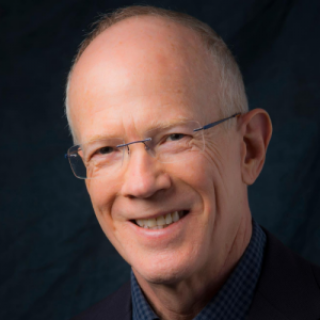Implementing Dual Language Immersion Programs with Intentionality

May 16, 2024
In reflecting upon my most favorite work, what always comes to mind are the opportunities I've had to deeply understand how both the research and the practice of early childhood education and systems come together. This started with my unique experience of having worked in a research institute and then subsequently as a preschool classroom teacher. Currently I continue to work in the intersection of research, policy and practice through various research projects, which allow me to sit at the intersection of these two worlds. In that space, I often observe early childhood education program administrators seeking solutions for their dual language learner (DLL) populations. I find that there is often a desire to “do the right thing” but a lack of knowledge about where to start or what the possibilities are for where to go. This is especially true for the implementation of dual language immersion (DLI) programs, which are deemed to be a north star based on extant research showing how effective these programs are in both supporting emergent bilingual children becoming proficient in English while providing effective opportunities to develop and maintain their home language. Similarly, teachers often ask “what does it look like” in reference to how much of each language to use, what materials are needed, what strategies to use, or what books should be purchased. Unfortunately, this often results in the implementation of dual language approaches that are happenstance rather than intentional creating inequitable opportunities and which do not guarantee best practice.
These are not easy challenges to overcome, but the good news is that we do know what practices are effective even though current policy and guidance are not adequate to support practitioners or hold programs accountable in systemic ways. In response, last week, an important report was released aiming to provide support in this very area. Operationalizing High Quality Dual Language Programming: From the Early Years to the Early Grades, led by Xigrid Soto-Boykin and Shanteel Meek of the Children's Equity Project (CEP) at Arizona State University, along with a wide range of other dual language experts, provide a framework to guide the implementation of dual language immersion (DLI) programs for children who are emergent bilinguals. The report highlights seven key research-based dimensions and sub indicators to concretely guide the development of effective programs based on current research and input from experts. Included in these are:
- Programmatic structures
- Language allocation
- Curricula, instruction, and pedagogy
- Assessment
- Workforce, education, credentials, and professional development
- Family leadership and engagement
- Services and inclusion for emergent bilingual children with disabilities
Of course, while the new report provides important guidelines, getting it right requires action and a continuous improvement system. Conversations must bring visionary leaders, diverse practice-based collaborators, and families to the table. Who is at the table matters not only for moving policy forward but to ensure that policy is developed in ways that allow for effective implementation by teachers and benefit the learners that need it most. To this end, these conversations must be led by a vision and a mission that articulate what the goals of an immersion program are for administrators, teachers, children, and families. Further, leaders must become knowledgeable about what the research says and potentially seek partnerships for experts to collaborate with practitioners to reflect and develop their own policies and guidance. This type of collaboration can successfully lead to conversations about curricula, instruction, pedagogy, and assessment. Further, assessment must consider the specialized needs and strategies for DLLs. Data collected via specialized lenses inform decisions about professional development of teachers and other staff working with DLL children and families. The CEP report offers guidance on this front as well, highlighting NIEER’s work based on its measure for classroom quality for DLLs, the Classroom Assessment of Supports for Emergent Bilingual Acquisition; CASEBA.
Again, though the report aims to “operationalize” what the field has established as promising practice, the true operationalizing depends on systems, tools, and time devoted to doing the work. We are in dire need of leaders who acknowledge the urgency of the DLL population’s education needs and seek immediate ways to address them. In New Jersey, we have been providing professional development via the Self-Evaluation of Supports for Emergent Bilingual Acquisition (SESEBA) and are beginning to see a shift in both attitudes and agendas. However, for widespread use and to see improvements across programs, we need supportive systems. From my perspective, the information contained in the report further outlines what the ingredients for these systems of support need to be. Specifically, programs must be established intentionally, rather than relying on bilingual teachers to intuitively use Spanish without guidance or acknowledgment that which practices are, in fact, the ones we are striving to see. Ultimately, this is what DLLs, and their families need and deserve, so that participating in a high-quality DLL program is not only a feasible option, but also so that the quality of what they receive relies on intention rather than happenstance.
The Authors
Dr. Figueras-Daniel was awarded a Young Scholars Program grant from the Foundation for Child Development to investigate coaching and professional development of Latina preschool teachers working with DLLs. At NIEER, she leads this study as well a project to develop a Latina leadership pipeline in ECE.
W. Steven (Steve) Barnett is a Board of Governors Professor and the founder and Senior Co-Director of the National Institute for Early Education Research (NIEER) at Rutgers University. Dr. Barnett’s work primarily focuses on public policies regarding early childhood education, child care, and child development.
About NIEER
The National Institute for Early Education Research (NIEER) at the Graduate School of Education, Rutgers University, New Brunswick, NJ, conducts and disseminates independent research and analysis to inform early childhood education policy.


